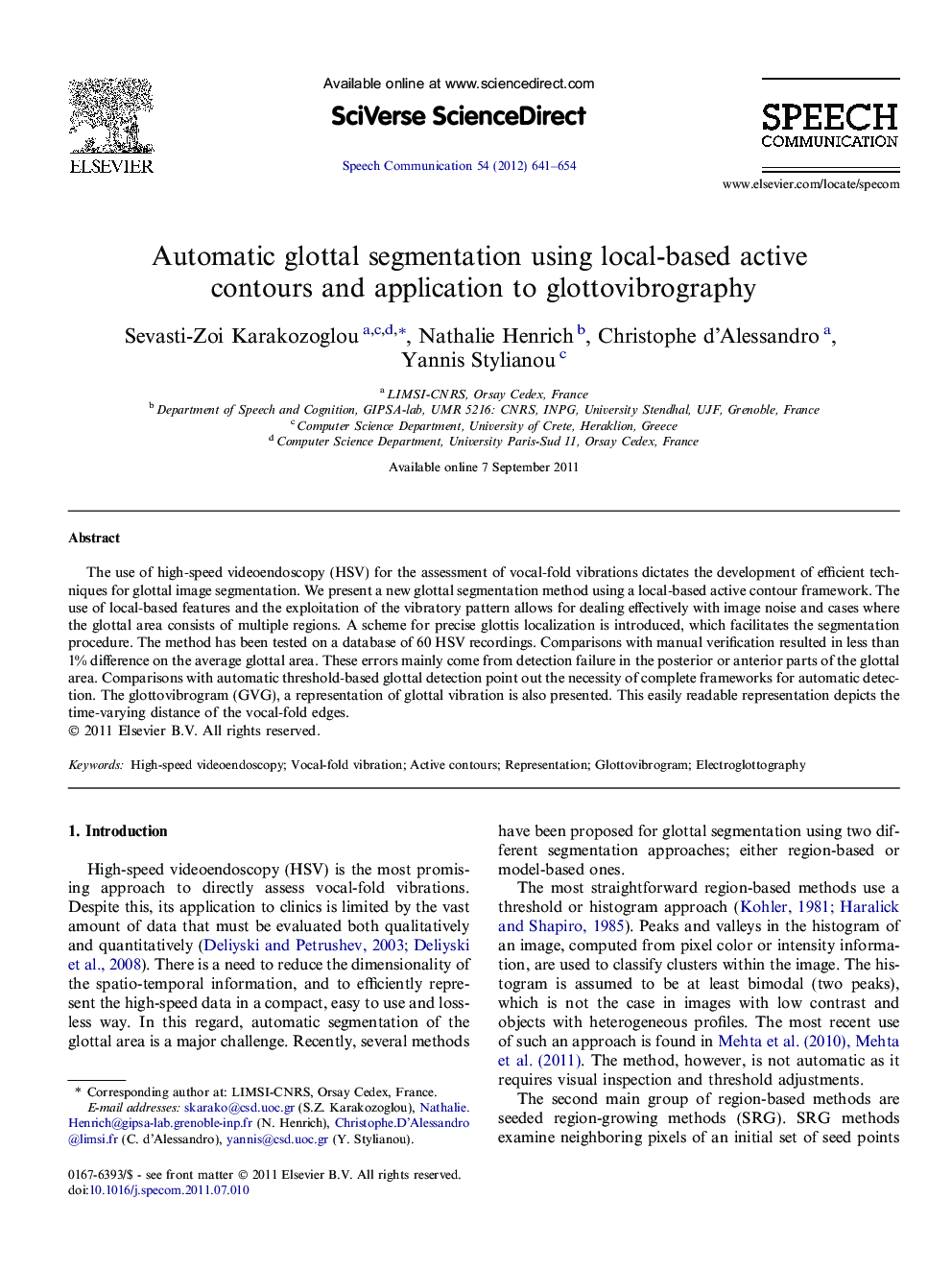| Article ID | Journal | Published Year | Pages | File Type |
|---|---|---|---|---|
| 566049 | Speech Communication | 2012 | 14 Pages |
The use of high-speed videoendoscopy (HSV) for the assessment of vocal-fold vibrations dictates the development of efficient techniques for glottal image segmentation. We present a new glottal segmentation method using a local-based active contour framework. The use of local-based features and the exploitation of the vibratory pattern allows for dealing effectively with image noise and cases where the glottal area consists of multiple regions. A scheme for precise glottis localization is introduced, which facilitates the segmentation procedure. The method has been tested on a database of 60 HSV recordings. Comparisons with manual verification resulted in less than 1% difference on the average glottal area. These errors mainly come from detection failure in the posterior or anterior parts of the glottal area. Comparisons with automatic threshold-based glottal detection point out the necessity of complete frameworks for automatic detection. The glottovibrogram (GVG), a representation of glottal vibration is also presented. This easily readable representation depicts the time-varying distance of the vocal-fold edges.
► Local-based active contour framework is applied so as to improve glottal segmentation. ► Segmentation’s discriminative power is investigated on 60 high-speed video recordings. ► Manual verification resulted in less than 1% difference on average glottal area. ► Glottovibrogram depicts time-varying distance of the vocal-fold edges. ► Glottovibrogram is effective while reducing error from glottal-axis detection.
